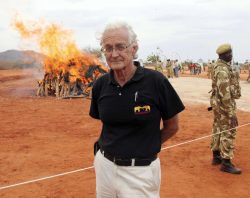
Bangalow Koalas volunteers plant trees, in Ewingsdale, Australia on Nov. 2.
17:53 JST, December 15, 2023
BANGALOW, Australia (Reuters) — When Lucy was rescued from a rural property in New South Wales two years ago, she was suffering from chlamydia, a disease widespread among koalas.
Today, she’s one of the lucky residents of tree corridors in the Australian state dedicated to protecting the marsupial by preserving its rapidly shrinking habitat.
The vast networks of vegetation, planted by local conservation group Bangalow Koalas in the Northern Rivers region of the state, are a lifeline for koalas and numerous other species like the endangered glossy black cockatoo, gliders, possums, and wallabies.
They provide safe passage across the koala’s increasingly fragmented habitat, increasing genetic diversity and protecting the animals from human threats.
“Our corridors are actually trying to get them away from humans, from cars, from dogs,” said Linda Sparrow, president of Bangalow Koalas. “They can safely move across the landscape and not have to put up with us humans.”
The koala is predicted to be extinct in the wild in New South Wales by 2050, with some of the biggest threats being wildfires, habitat loss though logging and land clearing for development. It has already been declared as endangered in several states.
A 2022 government report showed that Australia has lost more mammal species than any other continent.
Founded in 2019, Bangalow Koalas has planted over 336,000 trees on 119 properties, contributing to koala conservation and boosting the local ecosystem. The group, which relies on community volunteers, aims to plant 500,000 trees by 2025.
“The neighbor would want to join and then another neighbor will want to join,” Sparrow said. “It’s like a domino effect where all these people all over the Northern Rivers want to join our corridor.”
Volunteer Lindy Stacker, who has been planting trees for over five years, said the activity was “better than meditation, better than yoga,” and had rallied the community together.
A recent report by the Australian Koala Foundation said the iconic marsupial was worth an estimated $3.2 billion per annum to the tourism industry.
However, the World Wildlife Fund Australia reported alarming declines in koala populations, with a 50% drop in Queensland and a 62% drop in New South Wales since 2001.
Sparrow remains committed to the cause.
“I can’t imagine a world where there’s no koalas in the wild,” she said.
“We’re going to do everything we can possibly to make sure that doesn’t happen.”

Lucy, an adult female koala sits in a eucalyptus tree planted by Bangalow Koalas, in Bangalow in this undated photo.
"Science & Nature" POPULAR ARTICLE
-

Genome Study Reveals Milestone in History of Cat Domestication
-

Big Leap in Quest to Get to Bottom of Climate Ice Mystery
-

Security Camera Footage Vulnerable to Outside Access; Investigation Finds 3,000 Pieces Exposed Online
-

Paws on Parade: Nairobi’s Dogs Dazzle at ‘Pawchella’
-

Japanese Eels Escape New Regulation in Vote at CITES Meeting, Avoiding Higher Prices for Dealers and Diners
JN ACCESS RANKING
-

Keidanren Chairman Yoshinobu Tsutsui Visits Kashiwazaki-Kariwa Nuclear Power Plant; Inspects New Emergency Safety System
-

Imports of Rare Earths from China Facing Delays, May Be Caused by Deterioration of Japan-China Relations
-

University of Tokyo Professor Discusses Japanese Economic Security in Interview Ahead of Forum
-

Japan Pulls out of Vietnam Nuclear Project, Complicating Hanoi’s Power Plans
-

Govt Aims to Expand NISA Program Lineup, Abolish Age Restriction























